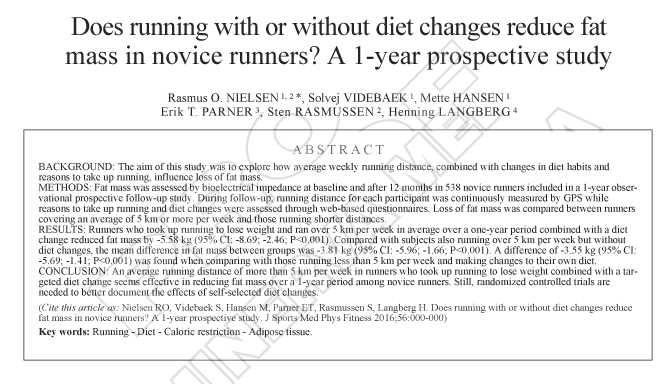New Article Published in JSMPF
A new RUNSAFE publication recently surfaced with the aim to To explore how average weekly running distance, combined with changes in diet habits and reason to take up running, influence fat mass. The authors were Nielsen R. O., Videbaek S., Hansen M., Parner E. T., Rasmussen S., Langberg H.

Abstract:
METHODS: Fat mass was assessed by bioelectrical impedance at baseline and after 12 months among 538 novice runners included in a 1-year observational prospective follow-up study. During follow-up, running distance for each participant was quantified continuously by GPS while reason to take up running and change in diet was assessed trough web-based questionnaires. Loss of fat mass was compared between runners exceeding an average of 5 kilometers per week and those running less.
RESULTS: Among those taking up running to lose weight, running >5 kilometers per week in average over 1-year combined with a positive change in diet reduced the fat mass of -5.58 kilogram [-8.69;-2.46], p <0.001. Compared with those also running >5 kilometers per week but without changes in their diet the mean difference in fat mass between groups was -3.81 kg [-5.96; -1.66], p < 0.001. A difference of -3.55 kg [-5.69; -1.41], p < 0.001 was found when comparing with those running ?5 kilometers per week and changed diet positively.
CONCLUSION: An average running distance more than 5 kilometers per week in runners who took up running to loose weight combined with a positive change in diet, may be more effective to reduce fat mass over a 1-year period among novice runners than running without diet changes. Importantly, randomized controlled trials are needed to finally document the effect of self-structured diet changes.
